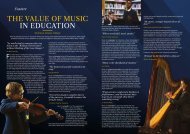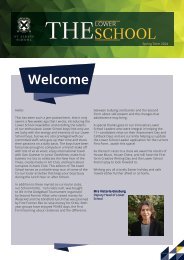You also want an ePaper? Increase the reach of your titles
YUMPU automatically turns print PDFs into web optimized ePapers that Google loves.
58<br />
which initially spearheaded<br />
the boycott. After a lot of<br />
pressure and many meetings<br />
between the TGWU<br />
and the Bus company finally<br />
on the 28 th August 1963<br />
the ban on coloured Bus<br />
crew members ended. This<br />
was the very same day<br />
Martin Luther King made<br />
the famous ‘I have a dream<br />
speech’. On September 17 th<br />
the first coloured man, a<br />
Sikh man, joined the bus<br />
crew.<br />
The <strong>Gateway</strong> <strong>Chronicle</strong><br />
The impact of the Bristol Bus Boycott was far more<br />
significant than just the employment of people of<br />
colour as Bus crew members. The boycott acted as a<br />
catalyst in the movement for equality among every<br />
member in society. This is shown by the 1965 Race<br />
and Relations Act which made racial discrimination<br />
unlawful in public places. The Boycott shows the<br />
progress from Rosa Parks to movements across the<br />
world to government enacting laws and regulation<br />
to solidify and engrain change in society. The fight<br />
for racial equality was long and far from easy, however,<br />
movements like the Bristol Boycott was what<br />
made it possible for real change to occur in society<br />
and for there to be more equality among all races.<br />
Although the boycott is less famous than the likes<br />
of the Montgomery Bus boycott, the Bristol bus<br />
boycott was significant in the way it brought about<br />
real change and progress in government as well as<br />
the Bristol bus company itself.<br />
Above: students from the University of Bristol protesting<br />
in support of the boycott<br />
Praneel Jani L6IMS


















